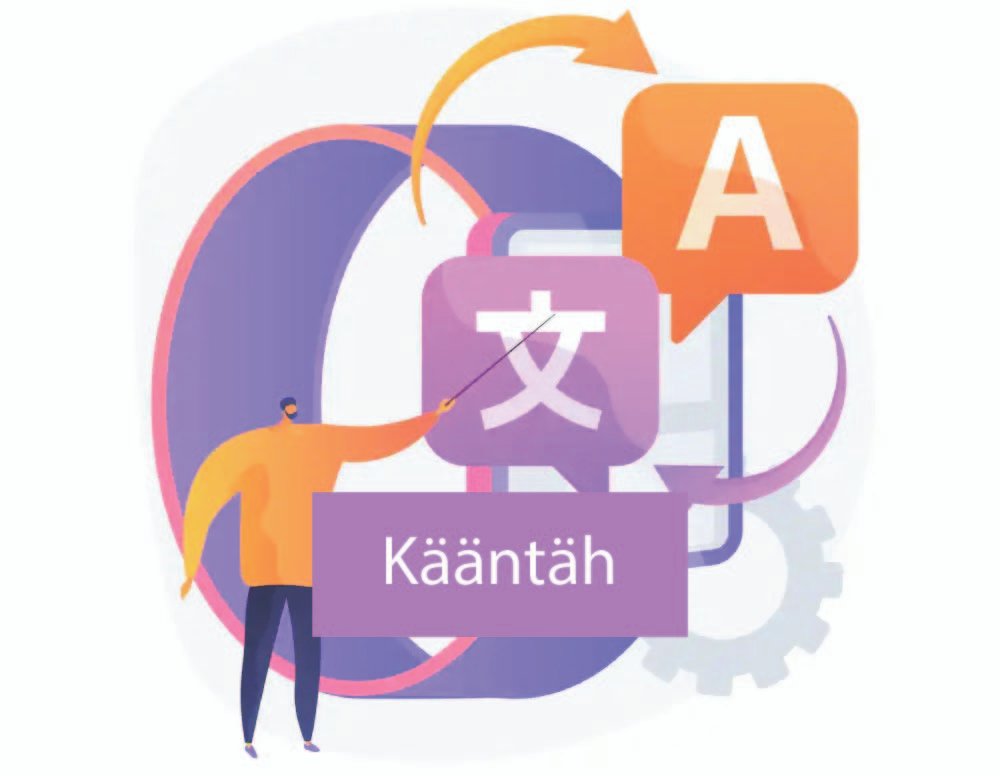‘Mastering Kääntäh’ is the essential guide and bibliographic reference works to another realm of translation artistry, the discovery of which is as pleasant as a refined, gourmet meal.
Table of Contents
Introduction to Kääntäh and Its Importance
Kääntäh, which stems from the Finnish language, refers to the movement of text or speech into another language. Kääntäh plays an immensely significant role in the contemporary world since it connects people of different linguistic backgrounds. English is spoken on several international platforms nowadays while globalization is advancing quickly; the need for efficient translators has increased, and proficiency in Kääntäh is thus considered a must. It is relevant to have a deeper insight into Kääntäh for every person who wants to succeed in translation.
Nevertheless, the history of Kääntäh can be traced back to the need to express thoughts, people’s norms, and even information in different languages and countries. In the past, interpreters have been essential in international relations such as diplomacy, Business, and cultural interactions. In today’s world, this role has gone much beyond and permeates almost all the sectors influencing the legal, medical, technical, and literary professions. All these sectors entail specific kinds of translation proficiency to meet the objective of accurately translating and simultaneously consider factors such as simplicity and, most importantly, cultural sensitivity of the target language.
In the legal field, for instance, accurate document translation is critical, given that justice must be served, and the trial processes should be understandable to all the parties involved. In the same manner, medical personnel require a precise translation of records, patient details, and medication directions’ for the efficient execution of job tasks and the safety of lives. Due to its specificity, technical translation that deals with complex manuals and user guides requires excellent professionalism to keep up with the original inputs. On the other hand, literary translation entails retaining the author’s original message, including the cultural aspects of the piece.
Considering its versatility and the increased demand for efficient communication in the context of globalization, it is even more crucial to master Kääntäh. Apart from providing benefits and better job prospects to the translators, it adds a lot to the realization of mutual respect and cooperation between different cultures. Having described the critical competencies for achieving success in translation, it is important to emphasize the role of Kääntäh as an essential component of this constantly developing sphere.

Essential Skills for Successful Translation
As will be demonstrated in the subsequent sections, several fundamental competencies need to bethatgrated to possess kääntäh and understand how to achieve translation success. First, it is necessary to note that language competency is one of the most crucial factors. A translator must, therefore, be knowledgeable of the two translation languages, namely the source language and the target language. This is the ability to write in a linguistically accurate manner in terms of vocabulary, grammar, phrasing, idioms, and tones. Daily practice, reading as often as possible in both languages, and involving oneself in language immersion can be very useful in enhancing language competency.
Another essential competency is cultural competence. When people think of translation, they often limit it to changing the language from one to the other: it goes beyond that; it entails passing meaning and message within the context of the receiving culture. Another way cultural competence can be attained is by learning about the culture, particularly cultural practices and conduct of people who speak the desired language. Interacting with the people of the target language and watching and reading the material of the target culture are helpful steps that can help raise awareness of the culture.
Specific content knowledge is also crucial, mainly when translating into or from the client’s area of operations in legal, medical, or technical assignments. It will be up to the translator to prove that he is highly familiar with the terminology of these fields and their modes. This may be done through acquiring further education, attending industry-specific workshops, and researching current trends in the fields of relevance.
Patience is also extremely vital in a translator since detail is very important. It helps to avoid mistakes and keep a high level of translation work all the time. This concerns issues such as checking for spelling or grammar errors, comparing the cited sources with the given information, and fact-checking. It is helpful to apply specific resources like unique vocabulary lists, dictionaries, terminology tools, and translation memories to support the quality of work in terms of precision.
Last but not least, the fluidity of knowledge requires that learning never stops among the members of an organization. The translation industry continues growing with new advancements, trends, and occasional calls for new technologies. Maintaining awareness of events in the field, participating in the professional development of one’s educational courses, and social networking are some ways translators can keep their skills relevant. Other techniques, like using CAT tools and machine translation post-editing, can also enrich the efficiency and quality of the translations.
Tools and Resources for Enhancing Translation Skills
Improvement in Kääntäh skills thus requires both conventional and advanced tools. Translation software programs are among the most essential tools for translators’ work. Some of these tools include SDL Trados Studio, MemoQ, and Wordfast, and their features include translation memories, terminology databases, and real-time translations, among others.
Dictionaries and glossaries on the web are also important; WordReference and Glosbe are popular websites containing translation memories, bilingual dictionaries, es, and contextual examples for the translator’s use when selecting pertinent words. Two specialized glossaries can be helpful; one may include terms of a particular specialization, while the other contains terms within a different and opposite field of specialization.
Peculiarly, valuable digital resources include dictionaries, glossaries, and various other tools. Applications like Google Translate or DeepL are much improved and can provide a first draft of the work; however, these are less reliable than a human translator’s work and should constantly be reviewed. Thirdly, computer-aided translation (CAT) tools help in computerizing large translation projects to ensure that translators work smart; that is, they help keep consistency in different documentation.
Membership in relevant professional translators’ organizations like the ATA and the FIT can open doors to resources, including pertinent information, professional development tools, and associates. Such organizations can host training seminars, online sessions, and conferences to ensure that translators educate themselves on industry trends and innovations.
An excellent example is socializing on active professional forums like Proz. Com and TranslatorsCafe. These platforms could help translators exchange information or obtain advice and experience. Interacting with other practitioners means that one can form partnerships to work on difficult translation projects.
Altogether, the given analysis indicates that to foster Kääntäh skills, it is necessary and beneficial to focus on using software and online sources and joining professional and community organizations. Thus, translators can make constant improvements and succeed in their translation projects whenever these elements are incorporated.
Conclusion
In this blog post, the main competencies needed for Kääntäh and its success in translation can be defined. Since translation involves transposing meanings and expressions from one language to another, the translator has to be proficient in both languages, culturally inclined, and knowledgeable in research. Besides, knowledge of technology and employing translators’ tools can dramatically improve the fluency and literalness of translations.
The linguistic knowledge required for mastering Kääntäh is complete, but that is not all: What is also needed is a lifelong process of learning and development. The regular client usually expects the translator to familiarize them with the current trends in the language they specialize in, even cultural changes and the latest technology in translation courses. Such ongoing involvement makes a particular promise that the end translations provided are correct not only in terms of semantics but also from cultural and contextual perspectives.
The path to the mastery of Kääntäh, a linguistic tool used by translators, may be challenging, but the result of the hardships is worth it. In the field of translation, there are ranks of opportunities, with positions in international organizations, freelancing, and specialized areas/markets. All required is hard work, diligence, and constant improvement to achieve one’s goal in this saturated market.
FAQs
Q1: What are the most essential skills for a translator?
A1: The most relevant characteristics for a translator are language knowledge, both in the source and the target language, cultural sensitivity, research skills, and IT competencies. Thoroughness and reporting are also significant components, and good communication skills are vital.
Q2: How can I improve my translation skills?
A2: Here are tips that can help enhance your translation ability: Attend workshops, take follow-up language courses, and gain practical experience. When translating, use other tools and software for better translation and to translate fast. Request feedback from other translators, especially those who are very experienced in the field.
Q3: What career opportunities are available for translators?
A3: Job prospects for translators are excellent; there is tremendous work for translators in almost all professions. Opportunities for employment are available with international organizations, governments, publishing houses, and translation service providers. Also, there is always freelance translation, and finally, there is translation specialization in the legal, medical, technical, or literary field and localization for international companies.
Q4: What challenges do translators commonly face?
A4: Some of the difficulties that translators face are<|reserved_special_token_267|> handling of technical terms and phrases as well as proper cultural and contextual translations within the set time regarding the ever-changing language and technological changes. These challenges can only be addressed by adequately planning time and ensuring the profession’s convention of updates.
In other words, with the understanding of Kääntäh and the acquisition of the related competencies, one can successfully serve the translation profession and thus make a difference. The trip can be challenging, but the benefit of a singular having helped develop better cross-cultural cross-cultural communication is invaluable. We inspire people who want to become translators to stick it out, find BTP, and be their best – even during those difficult periods.






